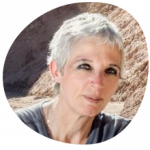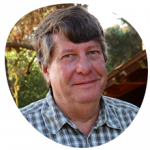Come join us for lightning talks from the SETI Institute's CEO and 7 scientists working on research relevant to the search for, and understanding of, life beyond Earth.
Is there ice on mars? What can we learn from extreme environments on earth, about extraplanetary environments? How can Earth's policies get ready for potential alien contact? How do teachers and scientists do experiments in space? What will it mean for the galaxy when mining operations extend to Mars and beyond? And what role does machine learning play?

Bill Diamond – President & CEO, The SETI Institute
Title: Meet the Institute
Overview: An introduction to the SETI Institute – its mission, organization and programs in research, education and outreach in space science and education

Nathalie Cabrol – Director, Carl Sagan Center for Research, The SETI Institute
Title: Extreme Environments on Earth and the Search for Biosignature on Mars
Overview: The exploration of terrestrial extreme environments plays a critical role in understanding the conditions that could have supported an origin of life on Mars, characterizing the signatures of habitability and those of the geological and environmental processes that may have modified these signatures through time. Their investigation allows to envision the spatiotemporal constraints these processes may have imposed on a biological record and their significance for the formation of biosignatures and their preservation. Critically, it also fosters the development of novel detection methods and tools.

Simon Steel – Director of Education, Outreach and Communications, SETI Institute
Title: The NASA Community College Network: A major new initiative to bring cutting edge space science to the community college system.
Overview: Almost half of introductory astronomy at college level is taught in two year and community colleges, institutions that also have the highest proportions of underserved and underrepresented student demographics. This new initiative has the potential to impact thousands of students in the way they engage with NASA and the process of science.

Margaret Race – Senior Research Scientist, Planetary Protection and Risk Communication, The SETI Institute
Title: It Takes More than Science & Technology: Addressing Real World Complexity while Searching for ET Life Nearby
Overview: For over 3 decades. NASA and the international space community have focused on searches for ET life in the Solar System-- particularly missions to Mars and the return of samples to Earth. While science and technology are clearly central to mission design and success, so too are 'real world' concerns like Planetary Protection, biosafety challenges, and legal issues posed by the UN Outer Space Treaty and national laws. Researchers at SETI Institute have been prominent in research and analysis in addressing both the potential biological risks and broad societal concerns associated with the prospect of discovering evidence of 'other' life nearby.

Dana Backman – NASA Airborne Astronomy Ambassadors Project Principal Investigator, The SETI Institute
Title: The Airborne Astronomy Ambassadors: Teacher professional development at 40,000 feet.
Overview: SETI Institute staff escort classroom teachers on flights of NASA's Stratospheric Observatory for Infrared Astronomy, SOFIA, to understand how scientists conduct their astromomy research programs.

Carol Cleland – Professor, Dept of Phillosophy and Director, Center for the Study of Origins, U. Colorado, Boulder, SETI Institute Affiliate
Title: How to Search for Extraterrestrial Life without a Definition of Life
Overview: Our experience with life is limited to a single example of life; all known life on Earth is descended from a last universal common ancestor. This means that we are dealing with a single sample of life. Logically speaking, one cannot base a definition of life on a single example. But then how can we search for extraterrestrial life if we don't know what we are looking for? In this talk I propose a strategy for doing this: Search for potentially biological anomalies using tentative (vs. defining) criteria.

Pamela Such – Planetary Scientist - Asteroid Research Affiliated Scientist SETI INSTITUTE
Title: Space Resources – A New Era for Humankind
Overview: Space mining is coming and it will open the doors for a new era of human exploration in the solar system. The availability of natural resources on the Moon for producing oxygen, water for human consumption, hydrogen for energy and mineral exploitation for production, is the first step in proving the possibility of humans working on long-term missions including extended time in a self-sustained base. It also facilitates the technology and techniques development for the human exploration of the deep solar system. But how does this new era relate to the search for intelligent life beyond our solar system? Like humans, an advanced civilization will also need to exploit available space resources in order to survive. This talk will analyze the challenges of the human exploration of space and also address how our methodologies in the search for life can be enhanced taking into account the concept of space resources.

James Boyd – Researcher, econometrics, AI/ML, data and policy, technology strategy, The New School, Boulder, Co. SETI Institute Affiliate
Title: Hypothesis Generation in SETI
Overview: We review a number of canonical SETI hypotheses that have been posited to explain human astrobiological observations, and which in turn motivate observational studies. We discuss the epistemological work advanced for discrimination of defeasible and non-defeasible hypotheses, and conclude with remarks on prospective frontiers of hypothesis-generaiton and the scientific method in the SETI field.
MIT Alums:
Please make sure you are a current member of your local club before registering. If you are unsure please ask your club representative or if you would like to join MIT Club of Northern California, click here.
If you just renewed your membership, the system requires 24-48 hours to update and recognize new members. For events within a day of renewal, please email clubadmin@mitcnc.org to verify membership and receive a direct link to registration.
Date and Time
Wednesday, February 03, 2021
5:00 PM - 6:30 PM PT
Location
Virtual Event
Primary Contact
Wendi Zhang
xwzhang@alum.mit.edu